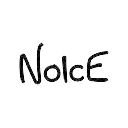-
 bitcoin
bitcoin $121833.232455 USD
-0.63% -
 ethereum
ethereum $4394.437030 USD
-2.00% -
 tether
tether $1.000570 USD
0.04% -
 bnb
bnb $1255.553465 USD
-3.73% -
 xrp
xrp $2.814944 USD
-1.59% -
 solana
solana $221.835346 USD
-2.40% -
 usd-coin
usd-coin $0.999869 USD
0.01% -
 dogecoin
dogecoin $0.249495 USD
-1.32% -
 tron
tron $0.336905 USD
-1.24% -
 cardano
cardano $0.816464 USD
-1.69% -
 chainlink
chainlink $22.130946 USD
-1.27% -
 hyperliquid
hyperliquid $44.208522 USD
-3.46% -
 ethena-usde
ethena-usde $1.000521 USD
0.02% -
 sui
sui $3.422897 USD
-2.51% -
 stellar
stellar $0.380164 USD
-1.31%
How to read the candlestick chart of MANA coin? What are the techniques?
To make informed decisions on MANA coin, understanding candlestick charts is key; they visually represent price movements and market trends within Decentraland's ecosystem.
May 21, 2025 at 09:57 am

Understanding how to read the candlestick chart of MANA coin, a popular cryptocurrency within the Decentraland platform, is essential for any trader or investor looking to make informed decisions. Candlestick charts provide a visual representation of price movements, offering insights into market trends, momentum, and potential reversals. This article will guide you through the process of interpreting these charts and discuss various techniques to enhance your analysis.
Basics of Candlestick Charts
Candlestick charts are a type of financial chart used to describe price movements of an asset over time. Each 'candlestick' represents the price action during a specific period, which could be a minute, hour, day, or any other timeframe. The body of the candlestick shows the opening and closing prices, while the wicks or shadows indicate the highest and lowest prices reached during that period.
- If the closing price is higher than the opening price, the candlestick is typically green or white, indicating a bullish period.
- Conversely, if the closing price is lower than the opening price, the candlestick is usually red or black, signaling a bearish period.
Understanding these basics is crucial before delving into more advanced techniques.
Reading MANA Coin Candlestick Charts
When analyzing the candlestick chart for MANA coin, it's important to focus on several key elements:
- Price Range: The length of the candlestick's body and wicks provides information about the price range during the period. A long body suggests strong buying or selling pressure, while a short body indicates indecision.
- Color of the Candlestick: As mentioned, the color helps identify whether the market was bullish or bearish. For MANA, a green candlestick means the price closed higher than it opened, suggesting bullish sentiment.
- Wicks or Shadows: The length of the wicks can indicate the volatility and the rejection of certain price levels. Long upper wicks suggest that sellers pushed the price down from a high, while long lower wicks indicate that buyers pushed the price up from a low.
By observing these elements, you can start to understand the immediate sentiment and potential future movements of MANA coin.
Common Candlestick Patterns and Their Significance
Candlestick patterns are specific formations that can signal potential price movements. Here are some common patterns and what they might mean for MANA coin:
- Doji: A doji occurs when the opening and closing prices are virtually the same, forming a cross-like shape. This pattern indicates indecision in the market and can signal a potential reversal.
- Hammer and Hanging Man: Both patterns have small bodies and long lower wicks. A hammer at the bottom of a downtrend can signal a bullish reversal, while a hanging man at the top of an uptrend can indicate a bearish reversal.
- Engulfing Patterns: A bullish engulfing pattern occurs when a small bearish candlestick is followed by a larger bullish candlestick that completely engulfs the previous one. Conversely, a bearish engulfing pattern signals a potential downtrend.
Recognizing these patterns can help you predict where the price of MANA might head next.
Using Technical Indicators with Candlestick Charts
While candlestick charts provide valuable insights, combining them with technical indicators can enhance your analysis. Here are some popular indicators that can be used alongside candlestick charts for MANA coin:
- Moving Averages: These help smooth out price action and identify trends. A simple moving average (SMA) or an exponential moving average (EMA) can be plotted on the chart to see if the price is above or below the average, indicating bullish or bearish trends.
- Relative Strength Index (RSI): The RSI measures the speed and change of price movements. An RSI above 70 might indicate that MANA is overbought, while an RSI below 30 might suggest it is oversold.
- MACD (Moving Average Convergence Divergence): This indicator helps identify trend direction and momentum. When the MACD line crosses above the signal line, it can be a bullish signal, and when it crosses below, it can be bearish.
By integrating these indicators with your candlestick chart analysis, you can gain a more comprehensive understanding of MANA's market dynamics.
Practical Techniques for Analyzing MANA Coin Charts
Here are some practical techniques to apply when analyzing the candlestick charts of MANA coin:
- Trend Analysis: Identify the overall trend by looking at higher timeframe charts. If MANA is in an uptrend, focus on buying opportunities; if it's in a downtrend, look for selling or shorting opportunities.
- Support and Resistance Levels: Identify key levels where the price has historically struggled to move above or below. These levels can act as potential entry or exit points.
- Volume Analysis: Pay attention to the trading volume alongside candlestick patterns. High volume during a bullish engulfing pattern can confirm the strength of the bullish move.
By applying these techniques, you can enhance your ability to make informed trading decisions based on the candlestick chart of MANA coin.
Advanced Candlestick Chart Strategies
For those looking to take their analysis a step further, consider these advanced strategies:
- Candlestick Pattern Combinations: Look for combinations of patterns that can provide stronger signals. For example, a doji followed by a bullish engulfing pattern can be a powerful indication of a bullish reversal.
- Timeframe Analysis: Analyze MANA's candlestick charts across multiple timeframes. A pattern on a daily chart might be confirmed or contradicted by patterns on a weekly or hourly chart.
- Sentiment Analysis: Combine candlestick chart analysis with sentiment data from social media, news, and other sources. Positive sentiment can reinforce bullish candlestick patterns, while negative sentiment can enhance bearish signals.
These advanced strategies can provide a deeper insight into the potential movements of MANA coin.
Frequently Asked Questions
Q: How often should I check the candlestick chart of MANA coin?A: The frequency of checking the candlestick chart depends on your trading style. Day traders might check every few minutes, while swing traders might look at daily or weekly charts. It's important to align your chart-checking frequency with your trading strategy and time commitment.
Q: Can candlestick patterns predict the price of MANA coin with certainty?A: No, candlestick patterns do not predict price movements with certainty. They are indicators of potential market sentiment and trends, but they should be used in conjunction with other analysis tools and risk management strategies.
Q: Are there any specific candlestick patterns that are more reliable for MANA coin?A: While no pattern is universally more reliable, certain patterns like the engulfing patterns and doji can be particularly useful for MANA coin due to its volatility. However, reliability depends on the context and confirmation from other indicators.
Q: How can I practice reading MANA coin candlestick charts?A: You can practice by using a demo trading account that provides real-time data for MANA coin. Analyze historical charts, identify patterns, and track how they correlate with actual price movements. Additionally, many educational platforms offer interactive tools for practicing chart reading.
Disclaimer:info@kdj.com
The information provided is not trading advice. kdj.com does not assume any responsibility for any investments made based on the information provided in this article. Cryptocurrencies are highly volatile and it is highly recommended that you invest with caution after thorough research!
If you believe that the content used on this website infringes your copyright, please contact us immediately (info@kdj.com) and we will delete it promptly.
- Bitcoin, Trump, and Trade Wars: Retaliation Rattles the Crypto Market
- 2025-10-11 08:25:15
- Global Banks, G7 Stablecoins, and Exploration: Charting the Future of Finance
- 2025-10-11 08:25:15
- Morgan Stanley, Crypto, and the Gates of Mainstream Adoption
- 2025-10-11 08:30:01
- Donald Trump, Tariffs, and Signaling Back: A New Era of Trade Wars?
- 2025-10-11 08:30:01
- Navigating the Crypto Tide: From Fading Wallet Tokens to the Rise of LivLive and BNB Memecoins in '25
- 2025-10-11 08:30:01
- Roughrider Coin: Fiserv and North Dakota's Bold Stablecoin Leap
- 2025-10-11 08:30:16
Related knowledge

Practical parameter settings for a Bitcoin multi-timeframe moving average system
Sep 18,2025 at 10:54pm
Optimizing Timeframe Combinations for Bitcoin Trading1. Selecting appropriate timeframes is crucial when building a multi-timeframe moving average sys...

How can I filter out false breakouts in Dogecoin high-frequency trading?
Sep 22,2025 at 01:00am
Understanding False Breakouts in Dogecoin Trading1. A false breakout occurs when Dogecoin's price appears to move beyond a defined support or resistan...

Techniques for identifying tops and bottoms in the Bitcoin on-chain NVT model
Sep 20,2025 at 07:54pm
Understanding the NVT Model in Bitcoin Analysis1. The Network Value to Transactions (NVT) ratio is often described as the 'P/E ratio' of the cryptocur...

What does the surge in open interest in Bitcoincoin futures mean?
Sep 20,2025 at 11:18pm
Understanding the Surge in Dogecoin Futures Open Interest1. A surge in open interest within Dogecoin futures indicates a growing number of active cont...

How can I use the Ethereum USDT premium to gauge market sentiment?
Sep 18,2025 at 11:55pm
Understanding the Ethereum USDT Premium1. The Ethereum USDT premium refers to the price difference between USDT (Tether) traded on Ethereum-based plat...

What should I do if Ethereum staking yields decline?
Sep 20,2025 at 06:18am
Understanding the Causes Behind Declining Ethereum Staking Yields1. The Ethereum network transitioned to a proof-of-stake consensus mechanism with the...

Practical parameter settings for a Bitcoin multi-timeframe moving average system
Sep 18,2025 at 10:54pm
Optimizing Timeframe Combinations for Bitcoin Trading1. Selecting appropriate timeframes is crucial when building a multi-timeframe moving average sys...

How can I filter out false breakouts in Dogecoin high-frequency trading?
Sep 22,2025 at 01:00am
Understanding False Breakouts in Dogecoin Trading1. A false breakout occurs when Dogecoin's price appears to move beyond a defined support or resistan...

Techniques for identifying tops and bottoms in the Bitcoin on-chain NVT model
Sep 20,2025 at 07:54pm
Understanding the NVT Model in Bitcoin Analysis1. The Network Value to Transactions (NVT) ratio is often described as the 'P/E ratio' of the cryptocur...

What does the surge in open interest in Bitcoincoin futures mean?
Sep 20,2025 at 11:18pm
Understanding the Surge in Dogecoin Futures Open Interest1. A surge in open interest within Dogecoin futures indicates a growing number of active cont...

How can I use the Ethereum USDT premium to gauge market sentiment?
Sep 18,2025 at 11:55pm
Understanding the Ethereum USDT Premium1. The Ethereum USDT premium refers to the price difference between USDT (Tether) traded on Ethereum-based plat...

What should I do if Ethereum staking yields decline?
Sep 20,2025 at 06:18am
Understanding the Causes Behind Declining Ethereum Staking Yields1. The Ethereum network transitioned to a proof-of-stake consensus mechanism with the...
See all articles










































































